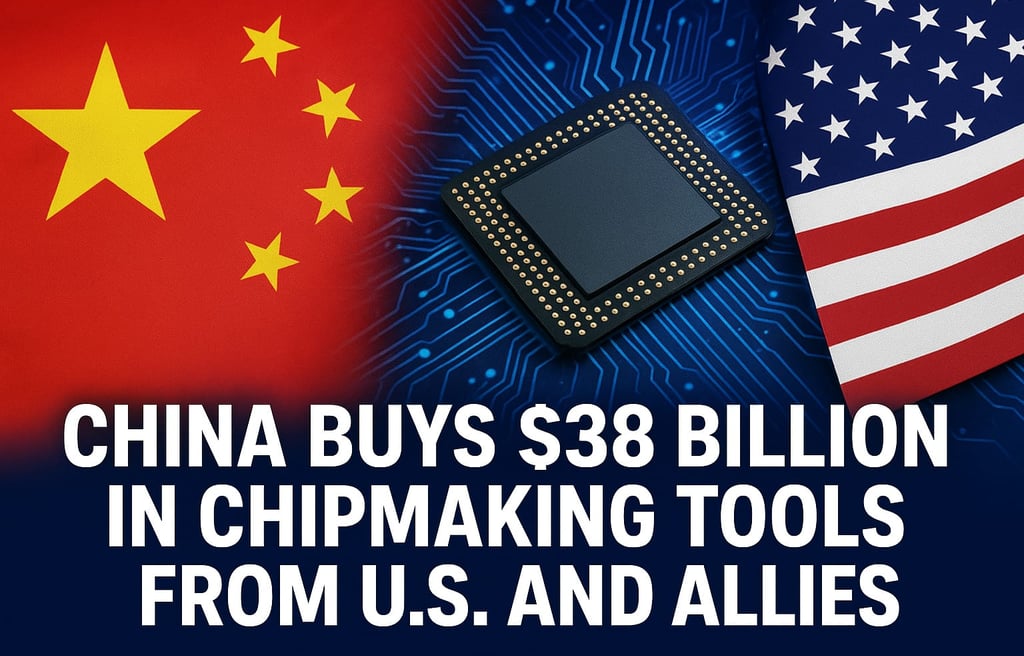China Buys $38 Billion in Chipmaking Tools from U.S. and Allies — Global Policy Under Pressure
China buys $38B in U.S. and allied chip tools despite restrictions — highlighting the failure of global export controls and rising Beijing tech dominance.
Raja Awais Ali
10/7/20252 min read


China Buys $38 Billion in Chipmaking Tools from the U.S. and Allies — A Sign Global Policy Is Failing
On October 7, 2025, new industry data revealed that China’s top chipmakers have purchased nearly $38 billion worth of advanced semiconductor manufacturing equipment from the United States and its allied countries over the past year. This significant surge in procurement suggests that Western export control policies aimed at restricting China’s technological progress are proving largely ineffective.
According to recent trade and industrial analysis, despite multiple restrictions from countries such as the U.S., Japan, the Netherlands, and South Korea, China managed to legally acquire billions of dollars in chipmaking tools through indirect channels and regulatory loopholes. Analysts say these transactions highlight the challenges in implementing unified export controls across multiple nations with differing economic interests.
Reports indicate that five major global manufacturers — Applied Materials, Lam Research, KLA, ASML, and Tokyo Electron — have been key suppliers in these transactions. Combined, nearly 39% of their global sales were made to Chinese firms, marking a 66% increase compared to last year.
Several Chinese companies, including SwaySure, Shenzhen Pengxinxu, and SiEn (Qingdao), have been identified as major buyers of this advanced equipment. Experts believe some of these firms may use the technology in military or high-security applications, strengthening China’s self-reliance in semiconductor production.
This development has raised concerns among Western policymakers, who had hoped that export restrictions would slow Beijing’s technological ambitions. Instead, the data reveals that China continues to advance its manufacturing capabilities — both by importing high-end tools and rapidly investing in domestic production technologies.
Beijing has also restructured its national semiconductor funding policy, focusing on building local capacity. The government recently announced new investments in lithography systems, chip design software (EDA tools), and raw material supply chains, aiming to reduce reliance on foreign technologies.
Chinese tech strategists argue that these steps mark a turning point in China’s industrial independence, positioning it as a stronger player in the global technology race. They emphasize that Western restrictions have inadvertently motivated China to accelerate innovation within its borders.
Industry experts warn that if Western nations fail to align their export policies and strengthen enforcement, China could soon become a dominant force in the global semiconductor market. This shift would not only challenge Western technological supremacy but also reshape the balance of global economic power.
Ultimately, China’s $38 billion purchase underscores a deeper reality — global policies designed to contain its rise are struggling to keep pace with Beijing’s strategic and technological adaptability.